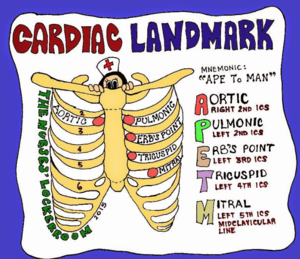HPA medications
Resource summary
Page 1
Aspirin
Trade names: Aspro - Disprin - Astrix - Solprin Chemical name: Acetylsalicylic Acid Therapeutic class: NSAID/Antipyretic Pharmacological class: Salicylates Indications: Inflammatory disorders including osteoarthritis & rheumatoid arthritis Mild - moderate pain Fever Prophylaxis of transient ischaemic attacks & MI Actions: Produces analgesia and reduces inflammation and fever by inhibiting the production of prostaglandins Decreases platelet aggregation Therapeutic effects: Analgesia Reduction of inflammation Reduction of fever Reduced incidence of transient ischaemic attacks & MI Pharmacokinetics: ABSORPTION: Well absorbed from the upper small intestine. Absorption from enteric-coated SR preps may be unreliable. Rectal absorption is slow and variable. DISTRIBUTION: Rapidly and widely distributed; crosses the placenta & enters breast milk METABOLISM + EXCRETION: Extensively metabolised by the liver, inactive metabolites excreted by the kidneys. Half-life: 2 -3 hrs for low doses, 15 - 30 for high doses because of liver metabolism saturation Contraindications/precautions: Hypersensitivity to aspirin or other salicylates Bleeding disorders or thrombocytopenia (low platelet count) History of GI bleeding or ulcer disease Asthma Adverse reactions/ side effects: EENT: tinnitus GI: bleeding, dyspepsia, epigastric distress, N + V, abdo pain HEP: toxicity HAEM: anemia, hemolysis, SKIN: rash, urticaria Interactions: May ^ the risk of bleeding with warfarin, heparins, heparin-like agents, thrombolytic agents Assessment: Pain assessment Fever Lab tests: monitor hepatic function if symptoms of hepatotoxicity occur or during long term use Patient/family education: Advise patient to report: tinnitus, bleeding of gums, easy bruising, black tarry stools, or fever > 3 days
Page 2
Insulin (short-acting)
Trade names: Actrapid Chemical name: Insulin Therapeutic class: BGL regulator Pharmacological class: Endocrine Indications: Type 1 diabetes Type 2 diabetes inadequately controlled with diet, exercise and oral antidiabetic drugs, and where oral antidiabetic drugs cannot be used Actions: Increase or restore ability to metabolise glucose by enhancing cellular glucose uptake inhibit endogenous glucose output and lipolysis. Therapeutic effects: BGL reduction Pharmacokinetics: ABSORPTION: Well absorbed from subcutaneous abdominal injection, slower to absorb in other injection sites DISTRIBUTION: Does not cross the placenta or enter breast milk - destroyed in the GIT METABOLISM + EXCRETION: Extensively metabolised by the liver, inactive metabolites excreted by the kidneys. Half-life: Varies with each preparation - metabolised at a cellular level Contraindications/precautions: Although insulin does not end up in breastmilk, it can cause a decrease in milk production Adverse reactions/ side effects: ENDO: hypoglycaemia, ketoacidosis, Interactions: Caution should be used when taking other drugs that decrease glucose levels in the blood such as MAOIs, betablockers, salicylates or alcohol. Dose should be adjusted accordingly. Betablockers can also interfere with signs of hypoglycaemia Assessment: BGL level pre and post Baseline vital signs to assist with detecting hypo/hyperglycaemia Monitor person's response to administration Patient/family education: Diabetes education: signs of hypoglycaemia, diet, exercise. Consider referral to diabetes education.
Page 3
Ampicillin
Trade names: Ampicyn - Ibimycin - Austrapen Chemical name: Aminobenzylpenicillin Therapeutic class: Antiinfective Pharmacological class: Antibiotic - Penicillin Indications: Chronic bronchitis CAP (community acquired pneumonia) Gonnococal infection Broad spectrum Actions: Bactericidal; interfere with bacterial cell wall peptidoglycan synthesis by binding to penicillin-binding proteins, eventually leading to cell lysis and death. Therapeutic effects: Reduction in bacterial infection Pharmacokinetics: ABSORPTION: Not well absorbed in GIT - best given via IV for optimal absorption DISTRIBUTION: Does cross placenta and into breastmilk - however is said to be safe METABOLISM + EXCRETION: partially metabolised by the liver, the remainder by the kidneys in urine. Half-life: 1 - 11 hours Contraindications/precautions: Penicillin allergy! Those with heart failure or on sodium restriction - high levels of sodium Immunocompromised individuals = high incidence of rash Renal impairment Adverse reactions/ side effects: Skin: rash GIT: diarrhoea, N + V, CNS: neurotoxicity at high doses/ renal impairment Interactions: Caution should be used when taking tetracyclines or aminoglycosides. Tetracyclines will decrease effectiveness of penicillin and penicillins will decrease the effectiveness of aminoglycosides. Assessment: Obtain specimen for culture Baseline vital signs Monitor person's response to administration Patient/family education: Tell patients to report adverse effects and the drink lots of fluids, and keep up nutrition.
Page 4
Cephazolin
Trade names: Cefazolin - Kefzol Chemical name: Cephazolin Sodium Therapeutic class: Antiinfective Pharmacological class: Antibiotic - Cephalosporin Indications: Staphylococcal and streptococcal infections in people with mild-to-moderate penicillin allergy Surgical prophylaxis UTI Actions: Interfere with bacterial cell wall peptidoglycan synthesis by binding to penicillin-binding proteins, eventually leading to cell lysis and death; bactericidal. Therapeutic effects: Reduction in bacterial infection Pharmacokinetics: ABSORPTION: Not well absorbed in GIT - best given via IV for optimal absorption DISTRIBUTION: Does cross placenta and into breastmilk - however is said to be safe METABOLISM + EXCRETION: Excreted unchanged in urine Half-life: 1.8 hours Contraindications/precautions: Some people who are allergic to penicillins are also allergic to cephalosporins Those with heart failure or on sodium restriction - high levels of sodium Immunocompromised individuals = high incidence of rash Renal impairment Adverse reactions/ side effects: Skin: rash GIT: diarrhoea, N + V, CNS: neurotoxicity at high doses/ renal impairment Interactions: N/A Assessment: Obtain specimen for culture Baseline vital signs Monitor person's response to administration Patient/family education: Tell patients to report adverse effects and the drink lots of fluids, and keep up nutrition.
Page 5
Want to create your own Notes for free with GoConqr? Learn more.

